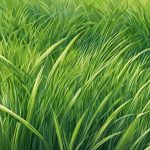Types Of Evergreen Trees
Evergreen trees are a popular choice for landscaping and gardening due to their year-round foliage and ability to thrive in a variety of climates. They are also known for their environmental benefits, including providing shelter and food for wildlife and helping to combat climate change through carbon sequestration.
There are many different types of evergreen trees, ranging in size from small shrubs to towering giants. Some common types include pines, firs, spruces, and cedars. Each type has its own unique characteristics, such as needle length and color, cone shape and size, and growth rate.
When it comes to planting and maintaining evergreen trees, it is important to consider factors such as soil type, sunlight exposure, and watering needs. Proper care can help ensure healthy growth and longevity. Additionally, evergreens can be used in a variety of landscaping designs, from creating privacy screens to adding texture and color to a garden.
Key Takeaways
- Evergreen trees provide year-round foliage and environmental benefits, making them a popular choice for landscaping and gardening.
- There are many different types of evergreen trees, each with its own unique characteristics.
- Proper planting and maintenance can help ensure healthy growth and longevity, and evergreens can be used in a variety of landscaping designs.
Types of Evergreen Trees

Evergreen trees are a popular choice for landscaping due to their year-round greenery and low maintenance. There are various types of evergreen trees to choose from, each with unique characteristics and growing requirements.
Pine Trees
Pine trees are one of the most common types of evergreen trees. They are known for their long needles and large cones. The white pine and red pine are native to North America and are popular for their use in building. The cones of pine trees are also used for decoration during the holiday season.
Spruce Trees
Spruce trees are another popular type of evergreen tree. They have short needles and are known for their conical shape. The Norway spruce and Colorado blue spruce are two common varieties of spruce trees. They are often used for landscaping due to their attractive appearance and ability to provide privacy.
Fir Trees
Fir trees are a type of evergreen tree with soft needles and cones that stand upright on the branches. The Douglas fir and white fir are two popular varieties of fir trees. They are often used for Christmas trees due to their attractive appearance and pleasant scent.
Cypress Trees
Cypress trees are a type of evergreen tree with scale-like leaves. The Leyland cypress and Arizona cypress are two common varieties of cypress trees. They are often used for landscaping due to their ability to provide privacy and their unique appearance.
Cedar Trees
Cedar trees are a type of evergreen tree with needle-like leaves and small cones. The eastern red cedar is a common variety of cedar tree. They are often used for landscaping due to their attractive appearance and ability to provide privacy.
Overall, evergreen trees are a great choice for landscaping due to their year-round greenery and low maintenance. When choosing a type of evergreen tree, it is important to consider the tree’s growing requirements and unique characteristics.
Planting and Maintenance
Soil and Water Requirements
Evergreen trees are hardy and adaptable, but they do require proper soil and water conditions to thrive. When planting evergreens, it is important to choose the right soil type. Most evergreen trees prefer well-draining soil that is slightly acidic. If the soil in your area is not naturally acidic, you can add sulfur to lower the pH level.
Water is also an essential component of evergreen tree care. Newly planted trees require regular watering until they become established. Water deeply once a week, making sure that the soil around the tree is moist but not waterlogged. During periods of drought, you may need to water more frequently.
Pruning and Care
Pruning is an important part of evergreen tree maintenance. Regular pruning helps to maintain the shape and size of the tree, as well as removing dead or diseased branches. Pruning also helps to improve air circulation and sunlight penetration, which can prevent fungal diseases from taking hold.
When pruning evergreen trees, it is important to use sharp, clean tools. Make sure to cut back to a healthy bud or branch, and avoid leaving stubs. Prune in the late winter or early spring, before new growth begins.
In addition to pruning, evergreen trees require regular care to keep them healthy and looking their best. Mulching around the base of the tree can help to retain moisture and suppress weeds. Fertilizing once a year with a slow-release fertilizer can also help to keep the tree healthy and vigorous.
Design and Landscaping with Evergreens
Evergreen trees are a great addition to any landscape design. They provide year-round greenery, privacy, screening, shade, and windbreaks. When designing with evergreens, it is important to consider the mature size of the tree, soil needs, and light requirements.
Privacy and Screening
Evergreens are a popular choice for creating privacy and screening in a yard. They can be used to block out unwanted views, noise, and wind. Popular evergreens for privacy and screening include arborvitae, spruce, and pine. These trees can be planted in a row to create a privacy hedge or screen.
Windbreaks and Shade
Evergreens are also great for creating windbreaks and shade. They can be used to block out cold winter winds or provide shade in the summer. Popular evergreens for windbreaks and shade include cedar, hemlock, and fir. These trees can be planted in a row to create a windbreak or used as a single specimen tree to provide shade.
When designing with evergreens, it is important to consider the mature size of the tree, soil needs, and light requirements. Some evergreens can grow to be quite large and may not be suitable for smaller yards. It is also important to choose the right evergreen for the soil type and light conditions in the yard.
In summary, evergreens are a versatile and valuable addition to any landscape design. They provide year-round greenery, privacy, screening, shade, and windbreaks. When designing with evergreens, it is important to consider the mature size of the tree, soil needs, and light requirements. Popular evergreens for privacy and screening include arborvitae, spruce, and pine, while popular evergreens for windbreaks and shade include cedar, hemlock, and fir.
Environmental Benefits and Uses
Wildlife Habitat
Evergreen trees provide excellent habitat for wildlife due to their year-round foliage and ability to provide shelter from harsh weather conditions. These trees offer a variety of nesting sites, food sources, and cover for birds, mammals, and insects. Many species of wildlife rely on evergreens as a primary food source during winter months when other vegetation is scarce. Additionally, evergreens provide important habitat for threatened and endangered species, making them a crucial component of many ecosystems.
Commercial Uses
Evergreen trees have a wide range of commercial uses. They are commonly used for timber production, as they are fast-growing and have a high wood density. This makes them ideal for construction, furniture, and paper products. Christmas trees are also a popular commercial use for evergreens, with millions of trees harvested each year for holiday decorations. In addition, evergreens are used in landscaping for their aesthetic appeal and ability to provide privacy and noise reduction.
Overall, evergreen trees play an important role in maintaining healthy ecosystems and providing a variety of commercial uses. Their ability to provide year-round habitat for wildlife and serve as a sustainable source of timber and other products makes them a valuable asset in many regions.
Challenges and Solutions
Pests and Diseases
Evergreen trees are not immune to pests and diseases, and they can be vulnerable to a variety of issues. For example, spider mites and aphids can cause damage to the needles and leaves of evergreen trees, while fungal diseases like needle cast can cause defoliation.
To prevent pest and disease issues, it is important to keep evergreen trees healthy and well-maintained. Regular pruning and watering can help to keep them strong, while applying insecticides and fungicides can help to prevent infestations and infections.
Climate and Location Adaptation
Evergreen trees are adapted to a variety of climates and locations, from the cold forests of Europe and Asia to the hot, dry deserts of Africa and North America. However, they can still face challenges in adapting to new environments or changing climates.
To help evergreen trees adapt to new locations or changing climates, it is important to choose the right species for the area. Some species are more tolerant of cold, heat, drought, or other environmental stresses than others. It is also important to provide the right growing conditions, such as well-drained soil, proper sunlight, and adequate water and nutrients.
In conclusion, while evergreen trees are known for their hardiness and year-round greenery, they are not immune to challenges such as pests, diseases, and climate adaptation. With proper care and attention, however, these challenges can be overcome, and evergreen trees can thrive in a variety of environments.






